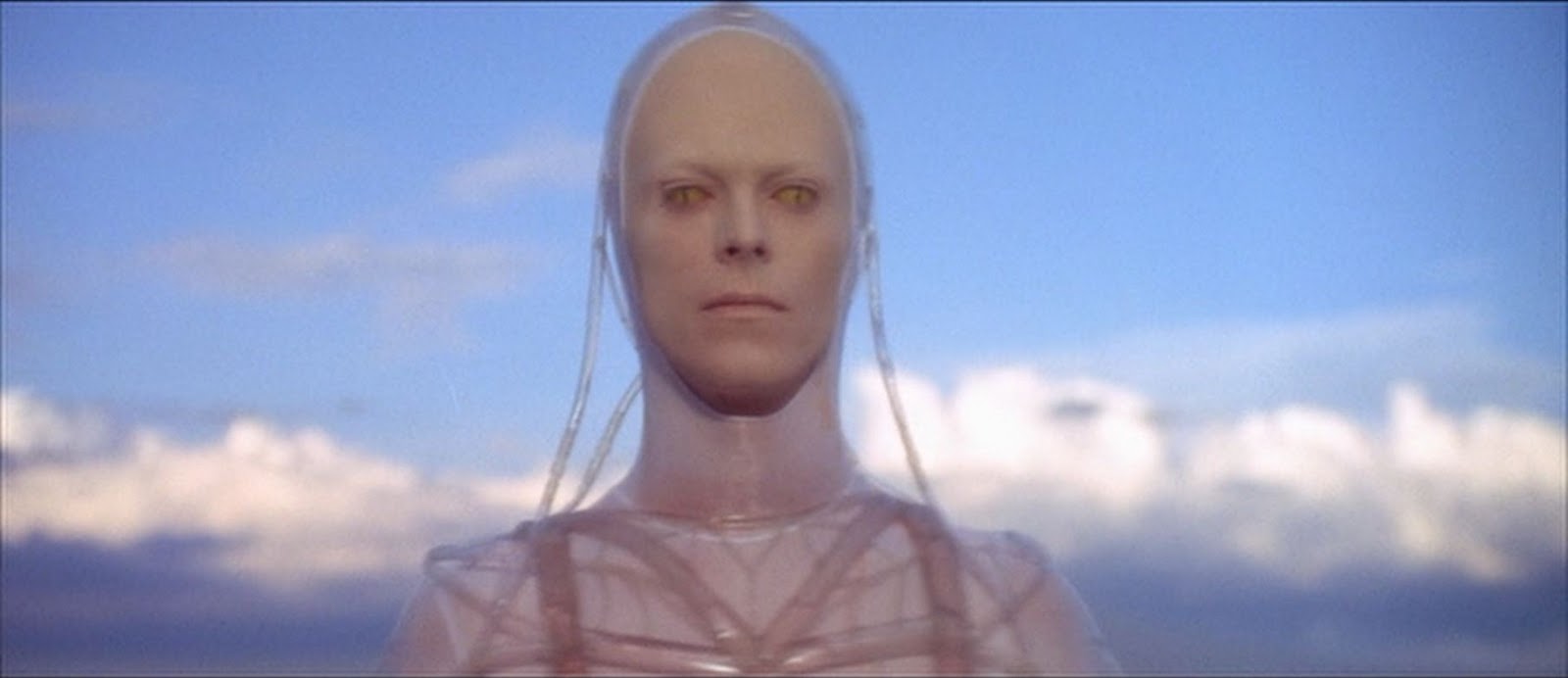David Bowie Rest In Peace
David Bowie, though at the height of his mid-70s “glam” fame at the time when this unusual picture was made, gives a restrained and dignified performance in this classic sci-fi film directed by Nicolas Roeg from the novel by Walter Tevis. First time viewers like myself should not expect to hear any Bowie music, but rather an odd assortment of music gathered together by John Phillips (of “Mammas and Pappas” fame).
What strikes me most of all is the film’s ambition — although surely some people are not going to like this movie, nobody could deny the audacity of the film’s method and message. There is full-frontal nudity, both male and female. Never did I imagine that I would see so much of Rip Torn on screen. Candy Clark on the other hand, I can’t get enough of. She was such an interesting screen presence. The real daring of this film isn’t in the sexual content but in the adult nature of the sci-fi, the film’s lack of typical linear narrative, etc. The director and writers want us to work out a lot of the problems or issues of the film.
The story itself is very simple — Bowie plays an alien who comes to Earth in search of water. All that he knows of Earth is the things he’s received on his planet over the airwaves from radio and TV. He sets up a corporation to make money off his patents with the ultimate goal of building a ship that can carry his people back to Earth with him.
The heart of the film is built around Torn, Clark, and Bowie’s characters. Although we see the government watching the alien throughout the entire film, Torn’s character perhaps speaks to the government and blames himself for betraying his friend. I liked the way Roeg told parts of this story indirectly, through the movies the alien watched on TV. When he’s becoming involved with Clark’s somewhat dowdy character, he’s watching “Love in the Afternoon”, a tale of stifled and somewhat mechanical romance. After Torn betrays him, we see snippets of Joseph Cotten in “The Third Man”, which is really the only confirmation that the film offers as to what has happened between Torn’s character and Bowie’s.
Some of the more “showy” parts of the movie are of course the ones that haven’t aged as well. There are shots of the alien family on their home planet that might have looked acceptable at the time of the film’s release but which look like a bad joke now. The film would be better off without them perhaps, but presumably they were necessary at the time to ensure that people didn’t feel completely ripped off in terms of sci-fi content. The sequences that really hold up are the ones where Roeg’s dynamic camera and editing techniques carry the thing, like the striking scene when Clark visits Bowie in prison and they have sex involving a firearm loaded with blanks (to the tune of John Phillips and Mick Taylor’s version of the old Johnny Cochrane “Hello Mary-Lou”).
This is intriguing, intelligent sci-fi from the era after Kubrick’s “2001” opened the doors for adult sci-fi cinema and before Lucas’ “Star Wars” essentially closed them again. As such, it’s far more interesting and ambitious than most other films of the era such as “Logan’s Run”, “Soylent Green” or Lucas’ own “THX-1138”, mostly because of Roeg’s mastery of both character and visual aspects of cinema. His experimental approach to film, involving many visible flares and harsh edits, seems to match the futuristic theme very well.

